We know that scales are what you use to weigh things.
There are balance scales.....
and bathroom scales.....
and even fish scales.....
But there is also the scale that you find on a map. They help you make a small accurate map of something that in real life is much, much bigger.
For example, we imagined how much paper we might need to make a real-size map of the route from our school to Chateau de Penthes. Rolls and rolls of the stuff, was the general consensus. And then there would be the problem of how to use it and carry it around. Impossible; at least without a truck!
So things get scaled down to make them smaller than real life.
This is what we did to help us understand it a bit better:
On centimetre squared paper we drew a square that was 10cm across and 10cm down. We used a ruler but we also counted the squares to make sure. We quickly spotted that this big square was made from 100 small squares (it had ten rows of ten squares; and we know that 10 x 10 = 100!)
Next we drew another square that was half the size; 5cm across and 5cm down. Again we quickly saw that it was made from 5 rows of 5 squares. And everyone who can count by five knows that 5 x 5 = 25.
Joe pre-empted me a little here. He asked, 'Is 25 a quarter of 100?' Good thinking Joe. Fast thinking Joe!
But let's take a step back for a moment. We asked ourselves, 'How many times does the small square fit into the big one?'
Answers ranged somewhat, from two, to four to six. So we took a bit more thinking time and then tried to convince others that our own answer was correct.
Fiona began by saying, 'I think it fits two times because....' and then she stopped; she had suddenly realised that two wasn't the correct answer!
Dangi went on, 'I think it fits four times because if 25 plus 25 is 50. Then 25 plus 25 is 50. Fifty and fifty is 100. So it's four.'
Max talked about 'fractions' of things. 'A half is when you have something cut in two. If you cut a half in half you get a quarter.' That's four.
Joe again. 'When I go swimming, there are two pools. One is a 50 metre pool and the other is a 25 metre pool. If I want to swim 100 metres, I only have to go two times up and down the 50 metre pool but I have to go 4 times up and down the 25 metre pool. So it's four.
And in American money there is a quarter. It's worth 25 cents. Four make a dollar.'
So in the end, after all that discussion we agreed that a 5cm square fits four times into a 10cm square.
Now the fun part. Let's take our 10cm square to the photocopier.
There is a button on it which you can press to make something half the size. We put our 10cm square inside and pressed the button. And guess what. Out came a smaller square (half the size of the original). When we measured it against the square we had drawn that was 5cm across and 5cm down, they were exactly the same size. No surprises there (I hope!)
Then we put the half-size one back in the copier and pushed that button again. And again, and again and again.....
To breathy oohs and aahs and smothered squeals (we were in the library after all!) we watched in awe as our original square got so small it almost disappeared.
The tiniest square is exactly the same and the biggest one - just smaller. And the same is true of a map. What you see on the paper is exactly the same as in real life - just smaller.
Now look:
The push-pin marks Pregny School on the aerial photograph.
and on the two maps.
What do you notice about the two maps? Can you see the how the scale is shown on the map (as well as on the photo)?
What about this map?
And one last thing.....this is something we took a look at at the end of this morning. Click the link and zoom out from a flowerbed at CERN to the universe and beyond.....
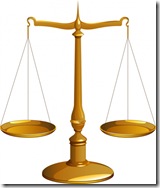


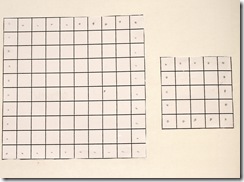

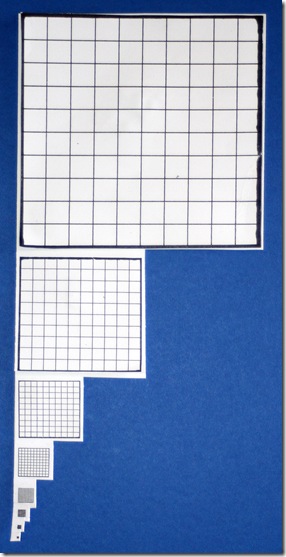
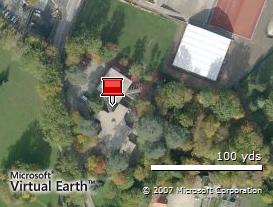
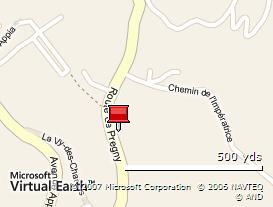

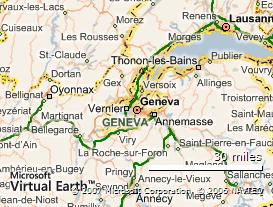




1 comment:
Another fun exploration of scale on the web is Molecular Expressions. An Interactive Java Tutorial examines an oak leaf from 10 million light years away to 100 attometers close up. The web site says "View the Milky Way at 10 million light years from the Earth. Then move through space towards the Earth in successive orders of magnitude until you reach a tall oak tree just outside the buildings of the National High Magnetic Field Laboratory in Tallahassee, Florida. After that, begin to move from the actual size of a leaf into a microscopic world that reveals leaf cell walls, the cell nucleus, chromatin, DNA and finally, into the subatomic universe of electrons and protons."
Post a Comment